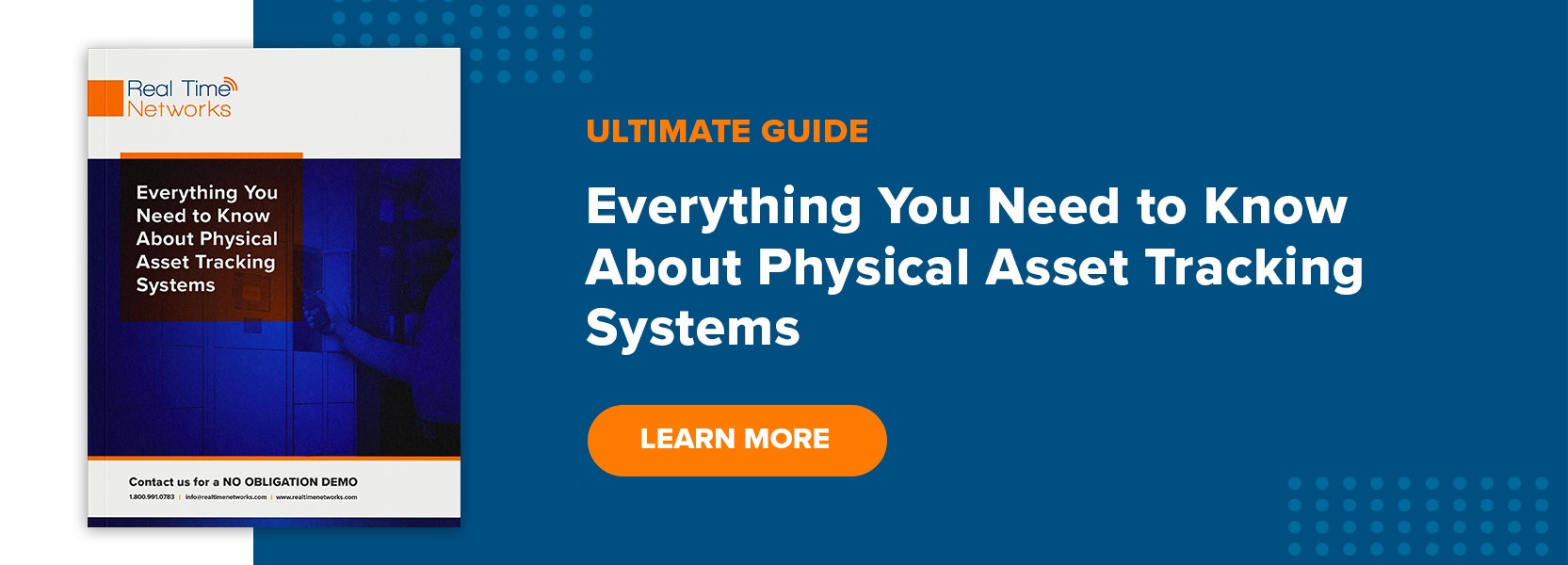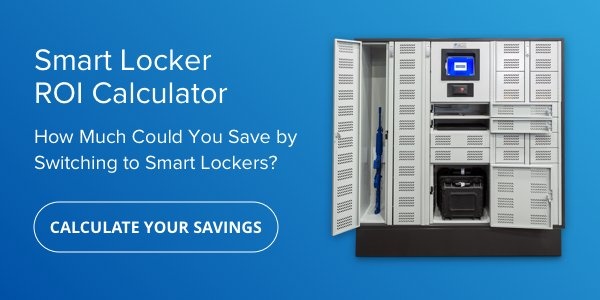By Jay Palter | April 27, 2021
![]()
Even in the best of conditions, keeping the public safe is a difficult job. But that job is often made even more challenging for law enforcement agencies by the need to work within limited budgets, abide by evolving regulatory standards, and keep up with the shifting priorities of local governments.
It is no surprise that agencies stick with inefficient manual operations simply because they’re familiar. But those methods are often inefficient and prone to human error.
That is what frequently happens with equipment management. Quartermasters often are left to manage their police gear, consumables, firearms, and other use-of-force tools with just a spreadsheet or paper logbook. Law enforcement asset tracking software is an effective alternative.
What Are the Benefits of Using Law Enforcement Asset Tracking Software?
Asset tracking software can automate and streamline asset management, which brings many benefits:
Save Time & Money
An automated tracking solution simplifies how you manage a shared pool of police equipment. This saves money on labor and saves time by getting fully equipped officers into the field faster. Your police force will be more effective in the day-to-day and during emergency response efforts.
Operating more cost-effectively is important, because the cost of law enforcement remains high. In 2017, the latest year reported, U.S. state and local governments spent $115 billion on police and a further $79 billion on corrections. Those figures are 4 percent and 3 percent of the total respective government budgets.
Wireless asset tracking technology can improve efficiency even further by completing component checks on multiple items simultaneously. This is called content surveillance. For example, a wireless content surveillance system can verify that all components in a radar kit are present when an officer signs the kit out or returns from traffic enforcement.
A content surveillance system could also verify all narcotics are present in EMT medkits when they’re transacted. Staff members are kept accountable for equipment in their possession, and kits are ensured ready for the next shift to sign out.
Gain New Insight on Equipment Usage
Tracking software can record every important detail of equipment transactions. Those details can include sign-out time, requesting staff members, whether returns are overdue, whether all kit components are present, and if personnel report any damage.
The tracking software never misses a sign-out or return, so the transaction log is always 100 percent accurate. All information is stored in a centralized, backed-up database. There is no risk of misplacing logbooks, and transaction information will always be available. That keeps staff accountable for every item they sign out.
The tracking software can also send reminders to staff or supervisors if someone forgets to return equipment at the end of their shift. Every transaction is precisely timestamped.
Easier Regulatory Compliance
Asset tracking is often mandated for equipment purchased through federal law enforcement grants in the United States. Asset tracking is also often necessary to comply with regulations on firearms and medications used by emergency services. Because tracking software records all transactions in a centralized database, you can easily generate reports that verify compliance with any set of regulations.
Reliable, automated transaction logging makes asset tracking software an excellent tool for verifying the chain of custody of these kinds of regulated assets. For example, a content surveillance tool, such as a scale built into a storage compartment, could conduct weight checks on OC spray canisters. You would be able to show definitive, shift-by-shift data of when OC spray cans were used.
The benefits may be clear, but how do you determine which asset tracking software is right for your agency?
5 Tips for Evaluating Law Enforcement Asset Tracking Software
Asset tracking systems may look complex, but evaluating them doesn’t have to be complicated. Follow these five straightforward steps, and you’ll be able to identify the tracking solution that best fits your agency’s needs.
1. Set Your Objectives
Before you do anything else, set the objectives you want to achieve by using a new asset tracking system. Are you looking to prevent major equipment losses that might result in fines, bad press, or loss of life? Or are you simply looking to improve the efficiency of day-to-day operations?
You should also determine what you want those day-to-day operations to look like after a new asset tracking system is installed. How do you want your quartermaster’s day-to-day work to change? How will work change for the officers and other personnel using the system?
Often, the best way to set these objectives is to seek input from key stakeholders in your agency. They could include your quartermaster, agency leadership, your IT and physical plant teams, and representatives from the different departments that will use the system. A wide range of stakeholders can give you a better perspective on what will work best for your agency.
2. See What Information Is Tracked
As we’ve discussed, one of the main benefits of asset tracking systems is the information they collect can provide valuable insights into how your agency operates. When you have a short list of asset tracking systems, one of the first things to compare among those systems is what information each is capable of collecting.
A good tracking system will be able to provide useful insight over complete equipment lifecycles, or as we like to say, “from the cradle to the grave.” For example, if you purchased equipment through a U.S. federal grant program, you may be required to track:
- Descriptions of assets
- Serial numbers
- Asset vendors
- Purchase dates
- Costs
- Funding sources, including federal award identification numbers (FAINs)
- Storage locations
- Use and condition of assets
- Decommissioning data, such as dates of disposal and sale prices
Evaluate how easily you’ll be able to collect and retrieve this kind of information from your short list of asset tracking systems.
3. Consider Usability
To be effective, asset tracking systems need to strike a balance between security and usability. If the equipment is so locked down that it becomes cumbersome for staff to access, then the system may not be better than a manual tracking process.
Evaluate how usable each asset tracking system on your short list would be given how your particular agency runs. Will officers have to wade through many layers of access control just to get their gear before going on patrol? Is the software intuitive, or will personnel need extensive training to use the system?
If asset tracking software is easy to use, personnel will be more inclined to input additional tracking data that you want to collect at sign-out or return. For example, you can ask them to log equipment damage, low consumable levels, or when electronics are in need of troubleshooting.
Gathering that type of information not only helps you keep equipment in service, but also enables you to identify usage trends, which can guide future equipment purchasing or staff performance reviews. For example, is one brand of police radio failing more often than another? Is your second shift really reporting 90 percent of all broken tablets?
4. Make Sure It Integrates
Many law enforcement agencies need to maintain a patchwork of legacy IT systems in order to connect with federal databases and coordinate with other local government agencies. Any asset tracking software or hardware you purchase will need to be compatible with these other systems on your network.
Looking for opportunities to integrate asset tracking software with other security and management systems can also lead to performance gains. You might be able to use the same access control system for asset tracking that you use for key management, fleet management, or your evidence management system.
Your asset tracking workflows need to integrate with existing workflows. Does the tracking software you’re considering improve the quality of your agency’s police work? Or does it create new burdens that are more trouble than they’re worth?
5. Research Service and Support
Determine how easily each system could slot into your existing business operations. A good asset tracking solution is more than just a product. Ideally, you’re purchasing a living technology that will adapt to the needs of your jurisdiction.
Adaptable systems will always require a degree of ongoing support. Ask different providers whether they can offer:
- Software customization
- Integration with existing systems
- Tailored tracking system rollouts
- Personalized training
- Ongoing support
- Ongoing software updates and upgrades
Equipment Management Matters
Law enforcement agencies are increasingly turning to automated asset management systems to handle the complex task of managing their electronics, firearms, and other police equipment. Budgets are tightening, and these agencies need ways to save on labor costs without compromising the effectiveness of their policing. Implementing better equipment management using advanced law enforcement asset tracking software is one of the best ways to achieve this goal.
Contact Real Time Networks today to schedule a free demo of our AssetTracer asset management solution.
Subscribe to our blog

Jay Palter
Vice President of Marketing & Partnerships






